Momofuku Week trudges on with a fried chicken recipe that’s my new favorite because it’s super easy and—as David Chang might say—fucking awesome. :)
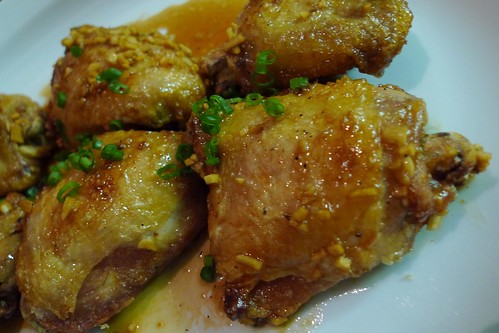
You might assume that this would be a recipe for Korean fried chicken (KFC), especially since Noodle Bar offers a bountiful platter of both Korean and American fried chicken for up to 8 people for $100. (If you think that’s expensive, it breaks down to $12.50 for 8 people, and in our ravenous group of 8, we had leftovers.) The fried chicken recipe from the Momofuku cookbook is quickly becoming an all-time favorite. It’s up there with the Ad Hoc fried chicken, but the two are so different that they live on their own perfect little islands.
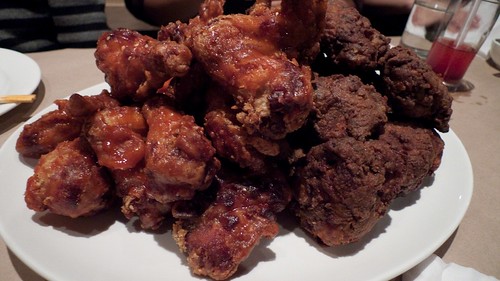 Noodle Bar’s Fried Chicken Platter
Noodle Bar’s Fried Chicken Platter
The main reason this fried chicken hits home for me is the Octo Vinaigrette that’s used to dress the chicken before serving. The Octo Vin was originally designed as an accompaniment for a grilled octopus dish, but it works wonders on the fried chicken, as well. It’s not an ordinary vinaigrette because the oil/vinegar ratios are reversed, and it’s loaded with fresh garlic and ginger. The smell is enough to get me excited about eating this fried chicken.
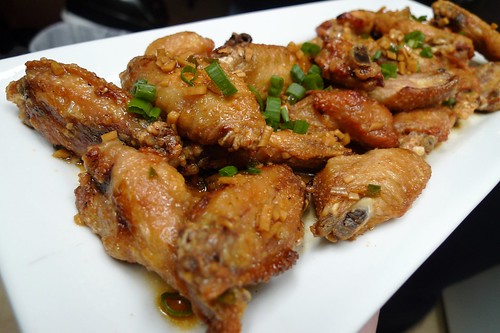 Works great on chicken wings, too!
Works great on chicken wings, too!
Chang employs a three-step process for this fried chicken: brine, steam, and fry. This is similar to my modification of the Ad Hoc Fried Chicken Recipe where I brine, sous vide, and fry the bird. The brine is a simple salt, sugar and water mixture and the brining time is anywhere between one and six hours. The chicken is then steamed for 45 minutes for so and then cooled for a couple hours. I took the steamed chicken and let it sit on a cooling rack in the fridge overnight. This helps dry out the chicken skin and helps it crisp up really nicely when it’s in the oil.
Take the chicken out of the fridge at least 30 minutes before you want to cook them. Then fry the chicken in 350F oil for about 6-8 minutes. Since the chicken is already cooked, you really only need to fry until the skin reaches your desired level of crispiness. Remove the chicken from the oil and drain them on a rack or paper towels. Before serving toss the chicken in the Octo Vin and garnish with sliced green onions.
RECIPES
Fried Chicken Brine
Good for 3–3½ pounds of chicken. I prefer legs and thighs, but wings work, too.
4 cups lukewarm water
½ cup sugar
½ cup kosher salt
Octo Vinaigrette
2 tbsp finely chopped garlic
2 tbsp chopped peeled fresh ginger
1 small fresh jalapeno seeded and chopped, or 1 tbsp Sriracha
¼ cup rice wine vinegar
¼ cup usukuchi (light soy sauce)
2 tbsp grapeseed or other neutral oil
¼ tsp Asian sesame oil
1½ tbsp sugar
Freshly ground black pepper
Download PDF excerpts of these recipes (courtesy of Time Out New York):
Tomorrow: Roasted Rice Cakes

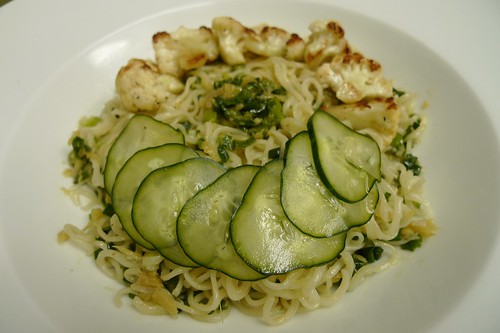 Ginger Scallion Noodles
Ginger Scallion Noodles
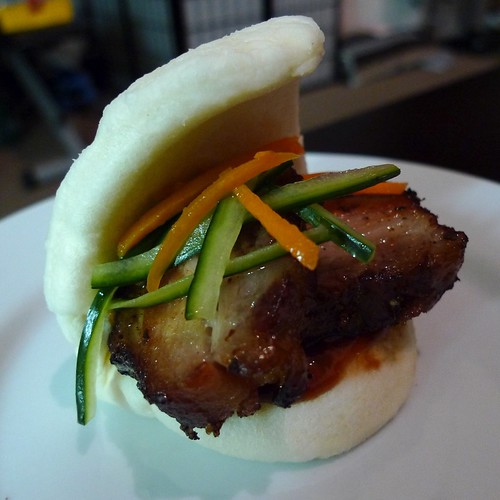


 Pork belly fresh out of the oven.
Pork belly fresh out of the oven.
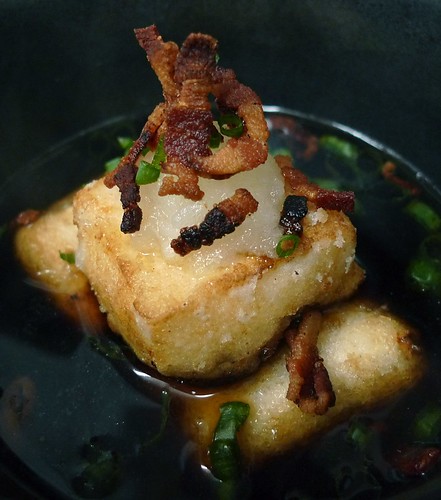 Bacon Agedashi Tofu, inspired by the Momofuku cookbook.
Bacon Agedashi Tofu, inspired by the Momofuku cookbook.